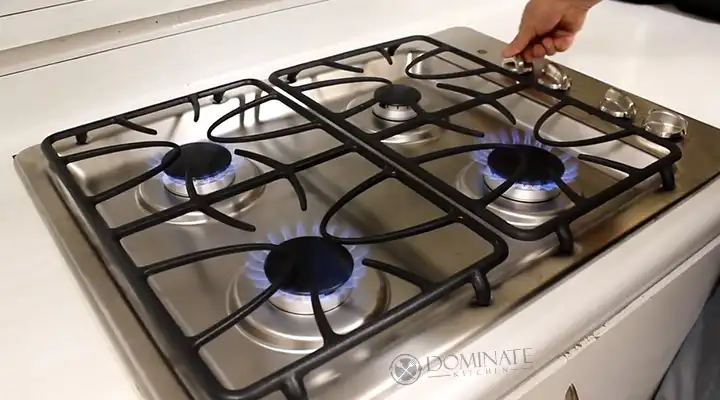How to Tell if a Stove is Gas or Electric?
Wondering whether you have a gas or electric stove in your kitchen? There are several ways to identify what type of fuel source your stove uses by carefully examining its appearance, function, and connections. This article will walk you through the process step-by-step.

Identifying Stove Type by Appearance

Cooktop
Electric stoves will either have a smooth glass top with flat spiral-shaped heating coils embedded underneath or a completely flat ceramic glass surface with no burners at all. Gas stoves, on the other hand, have circular metal burners topped by removable cast iron grates. These grates help distribute heat from the gas flames evenly across pans.
Burners vs Coils
Gas stove burners will have small slit-like holes for the gas flames to emerge. Electric coil burners have an obvious spiral shape.
Number of Burners
Gas stoves also tend to have larger and larger burners to accommodate more pans and pots cooking at once. Electric stoves usually have fewer, smaller burners.
Identifying Stove Type by Function

Ignition
When you turn a gas stove burner knob to ignite, you should hear a distinct clicking sound as the electric ignition sparker activates to light the gas. Electric stoves do not make this clicking noise when turned on because they have no flame to ignite.
Temperature Control
Gas stove burners also heat up instantly with very precise and immediate temperature adjustments possible. Electric coils take longer to heat up and have set temperature options rather than variable precise control.
Identifying Stove by Checking Connections

Electrical Plug
Electric stoves will have an electrical cord plugged into an outlet nearby.
Gas Line
Gas stoves require no plug but will have a gas line that connects to your household gas supply.
Venting
Gas stoves also need proper venting that electric stoves do not require.
Researching Model Number

If you have the owner’s manual or paperwork that came with your stove, it should clearly state whether the appliance is gas or electric. The model number, which can usually be found on a sticker or plate on the back, is also very helpful. Searching this model number online will provide all the details about your stove including fuel type.
FAQs
Can a stove be both gas and electric?
Yes, some stoves called dual fuel ranges have both gas cooktops and electric ovens. This allows for benefits of both fuel types.
Do gas stoves need electricity to operate?
Yes, most modern gas stoves need electricity to ignite, for oven lights, displays, and features. But gas provides the main heat source.
Can you manually light a gas stove if the electric ignition fails?
Old gas stoves with pilot lights can be manually lit. Modern stoves require electric ignition. Burners may still work with matches.
What are the main advantages of gas stoves?
More cooking power, instant adjustment, faster heating, cheaper operating costs in some areas.
What are the main advantages of electric stoves?
Even heating, easier to clean, no open flame or fumes, easier installation.
Which is better for the environment, gas or electric?
Depends on source of electricity. Renewables like solar make electric better. But much electricity still comes from fossil fuels.
Do gas stoves last longer than electric?
On average gas stoves last about 15 years, electric about 13 years. So lifespan is comparable.
Is it safe to use a gas stove indoors?
Yes, with proper precautions like no sparks/flames nearby, gas line maintenance, and safety features like auto-shutoff valves.
What safety features do modern gas stoves have?
Pilot lights, auto shut-off valves, tip-over protection, flame re-ignition, and control locks.
Summing Up
The main visible differences between gas and electric stoves are the cooktop surface (grates vs. flat top), the burners or coils, and the number of burners. The functional differences include ignition sounds, temperature controls, and heating response times. Finally, checking for gas lines, electrical plugs, and venting will confirm which type of fuel source your stove uses.







